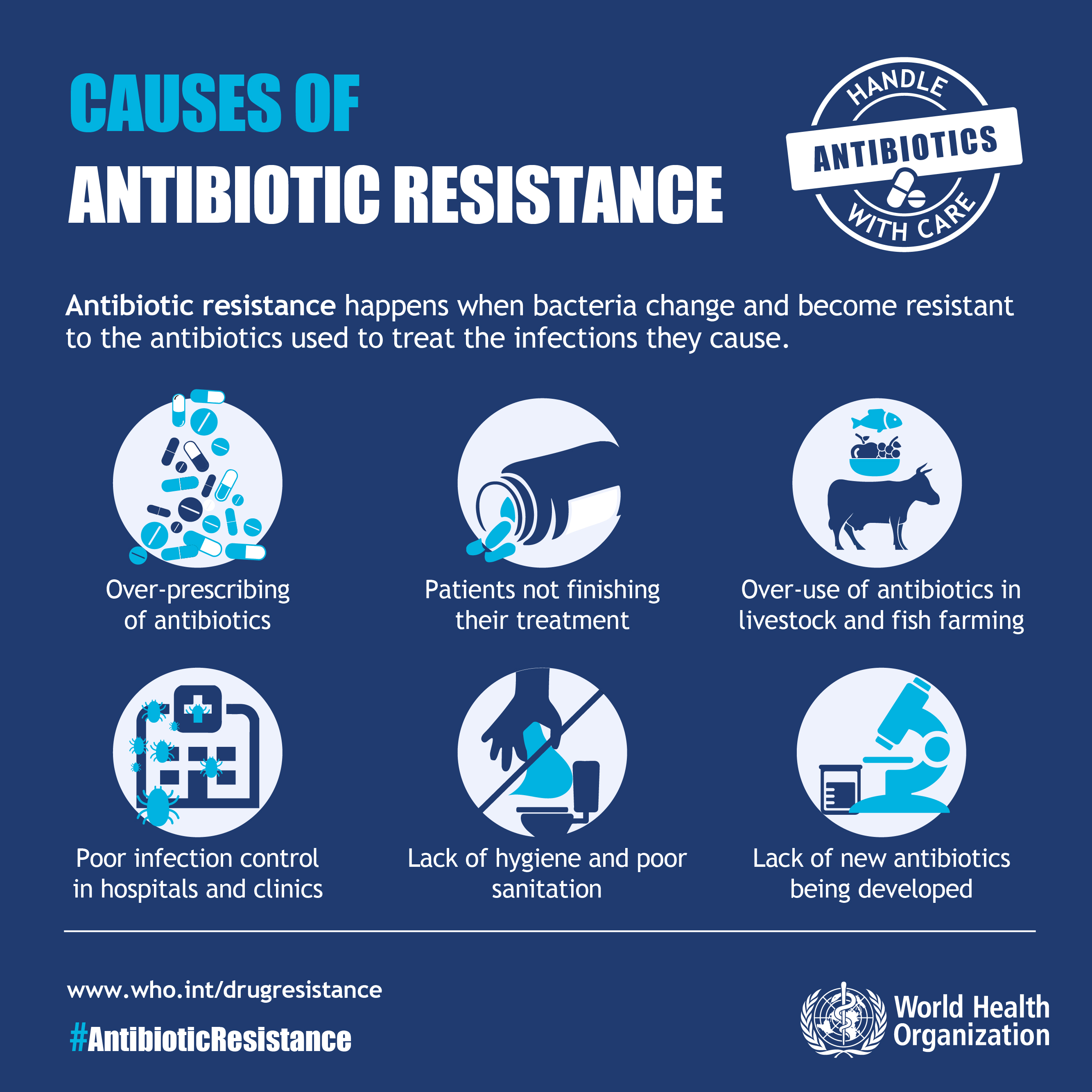Antibiotic resistance

ANTI-BIOTICS RESISTANCE
ANTI-MICROBIAL RESISTANCE (AMR) :is the ability of a microbe to resist the effects of medication that once could successfully treat the microbe.
ANTI-BIOTICS RESISTANCE (AR) : ability of the bacteria become resistance to anti-biotics.
Microbes are extremely small organisms that cannot be seen with the naked eyes. They can only be seen under the microscope. They are present everywhere; in the air, water and on surfaces. While some micrbes are useful to human beings, others are harmful. Harmful microorganisms are called pathogens. When they infect human beings, those pathogens causes diseases. Microbes are transmitted by various ways.The main routes of transmission are by air, water, food and also through certain vectors like mosquitoes, fleas, racts, ticks, etc.
Diseases which are transmitted from one person to another through various routes are known as infectious diseses. When a pathogen (harmful microbe) enter the body,they grow and starts to multiply and cause disease. The period between the entrance of pathogens into the body and the start of signs and symptoms of the disease is known as Incubation period.
The body has a defense mechanism that will start to the fight the pathogens as they enter the body. Blood has white blood cells that are capable to destroy the pathogens and the body has an immune system that starts to produce antibodies to kill them. When the defense mechanism fails to detroy the pathogens, complications occur and death can follow.
Therefore to control the disease, medecines called antibiotics are used these antibiotics either prevent the growth of the pathogens or kill them. Antibiotics are used in nearly all infectious diseases such as diptheria, malaria, TB, typhus etc. and have considerably reduced the mortability rate. The first antibiotic called penicillin was discovered by Sir Alexendra Fleming in 1928. Since then many new antibiotics have been found which have better efficiency.
However one major problem which is threatening the use of antibiotics is the rapid development of antimicrobial resistance. Antimicrobial resitance is when antibiotics are no longer effective towards microbes due to genetic changes. Overuse and misuse of antibiotics allows the development of antibiotic-resistant bacteria. Every time a person takes antibiotics, sensitive bacteria (bacteria that antibiotics can still attack) are killed, but resistant bacteria are left to grow and multiply. This is how repeated use of antibiotics can increase the number of drug-resistant bacteria.
The four main mechanisms by which microorganisms exhibit resistance to antimicrobials are:
1. Drug inactivation or modification: for example, enzymatic deactivation of penicillin G in some penicillin-resistant bacteria through the production of β-lactamases.
2. Alteration of target- or binding site: for example, alteration of protein binding site (PBP)—the binding target site of penicillins—in methicillin resistance staphylococcus aureus (MRSA) and other penicillin-resistant bacteria.
3. Alteration of metabolic pathway: for example, some sulfonamide-resistant bacteria do not require para-aminobenzoic acid (PABA), an important precursor for the synthesis of folic acid and nucleic acids in bacteria inhibited by sulfonamides, instead, like mammalian cells, they turn to using preformed folic acid
4. Reduced drug accumulation: by decreasing drug permeability or increasing active efflux (pumping out) of the drugs across the cell surface. These pumps within the cellular membrane of certain bacterial species are used to pump antibiotics out of the cell before they are able to do any damage.
The main causes of antimicrobial resitance are, incorrectly prescribed antibiotics by physicians, overuse of antibiotics, and incorrent use of antibiotics by patients. Thus while the responsibility of the physician is to prescribe the correct antibiotics, and the correct dose and duration to treat a disease, it is also the responsibility of the patient to take te antibiotics correctly as directed by the physician and pharmacist.

Responsibilities of individuals to avoid anti-biotic resistance:
- Telling healthcare professional your concerns about antibiotic resistance.
- Asking healthcare professional if there are steps you can take to feel better and get symptomatic relief without using antibiotics.
- Taking the prescribed antibiotic exactly as your healthcare professional tells you.
- Safely throwing away leftover medication.
- Ask your healthcare professional about vaccines recommended for you and your family to prevent infections that may require an antibiotic.
- Never skip doses.
- Never take an antibiotic for a viral infection like a cold or the flu.
- Never pressure your healthcare professional to prescribe an antibiotic.
- Never save antibiotics for the next time you get sick.
- Never take antibiotics prescribed for someone else.
- Prescribing an antibiotic only when it is likely to benefit the patient.
- Prescribing an antibiotic that targets the bacteria that is most likely causing their patient’s illness when an antibiotic is likely to provide benefit.
- Encouraging patients to use the antibiotic as instructed.
- Collaborating with each other, office staff, and patients to promote appropriate antibiotic use.
LAXMI JOSHI (PHARMACIST (G 3243)
ANNAPURNA PHARMACY P. LTD.
 Laxmi Joshi |
September 06, 2018
Laxmi Joshi |
September 06, 2018
 CORONA AWARENESS
CORONA AWARENESS
 All You should Know About Drug-Food Interaction And Pharmaist Role.
All You should Know About Drug-Food Interaction And Pharmaist Role.
 Can you use an inhaler after the expiration date?
Can you use an inhaler after the expiration date?
 SELF-MEDICATION OF ANTIBIOTICS
SELF-MEDICATION OF ANTIBIOTICS
 औषधी खाने बेला कती पानी अावश्यकता
औषधी खाने बेला कती पानी अावश्यकता
 GET WELL SOON CARD -शिघ्र स्वास्थ्य लाभ कार्ड
GET WELL SOON CARD -शिघ्र स्वास्थ्य लाभ कार्ड